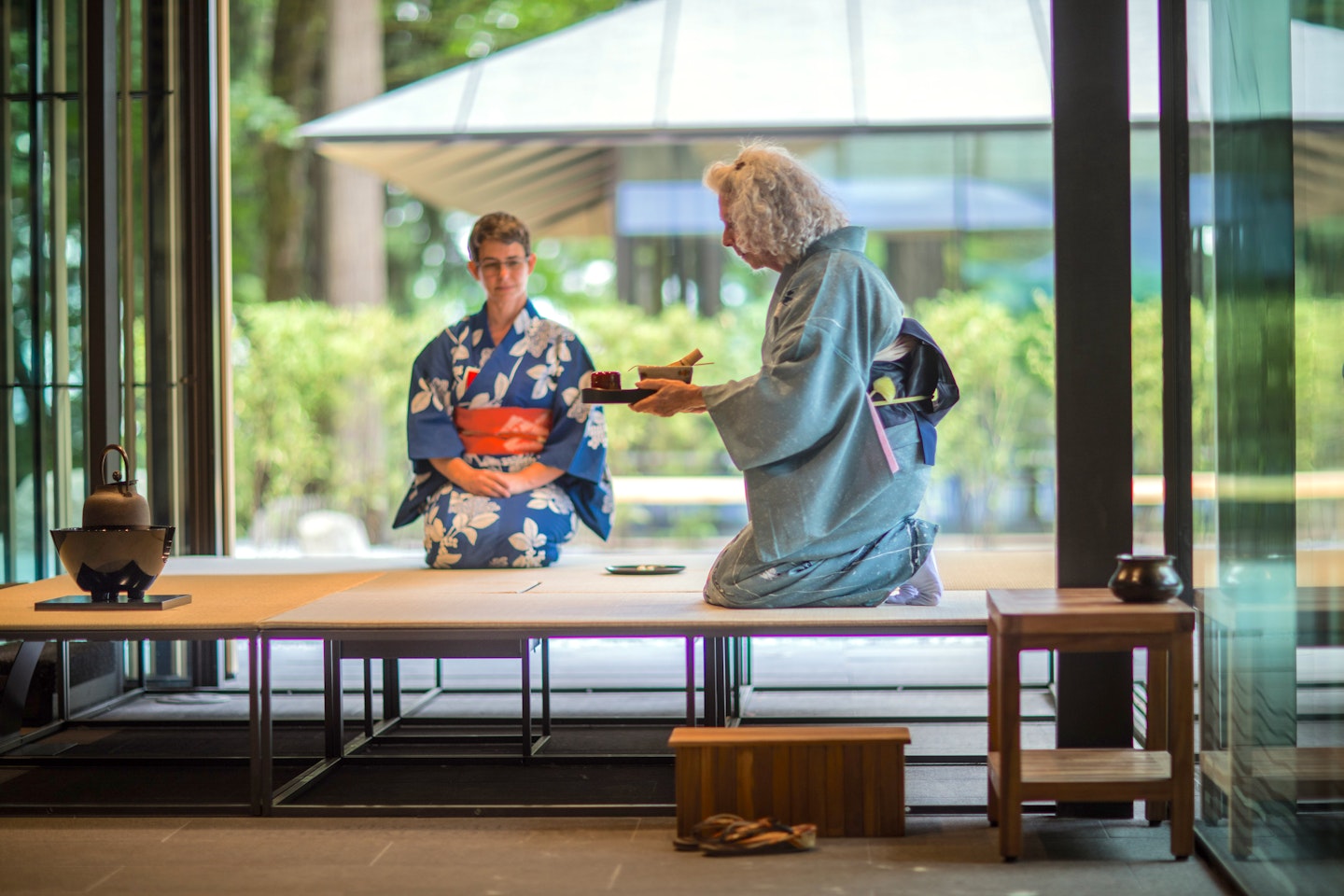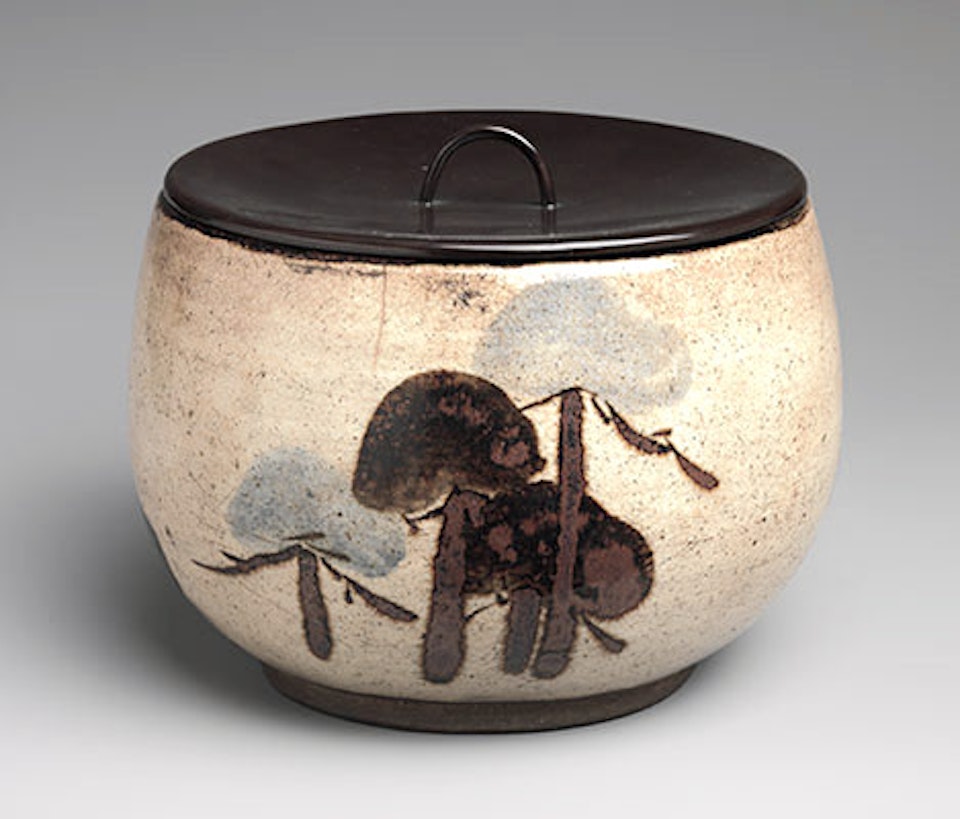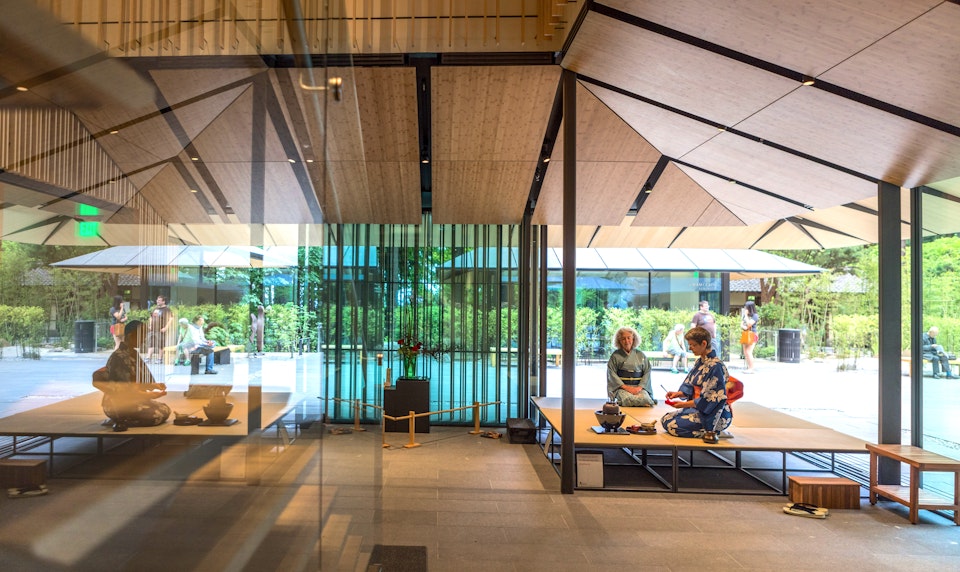December 22, 2019
The Art of the Japanese Tea Ceremony and What It Can Teach Us About Appreciating Everyday Items

The Japanese Tea ceremony, or sadō (“way of tea”) as we know it today, emerged during the 16th century during the Momoyama period in Japan, and was initially reserved for the very elite.
The particular period that perfected the tea ceremony was characterized by feudal wars, but became known for its decorative style. Gold was lavishly used in many art forms, from furniture to paintings. In some sense, the ornate nature of using items like glazed and richly-colored kintsugi and matcha bowls in the tea ceremony stemmed from this particular era.
But the actual practice of drinking tea originated in China and came to Japan even earlier through humbler beginnings during the Kamakura period (1192-1333) and was practiced by Zen monks who consumed the beverage so they could stay awake. Since tea was initially associated with the practice of Buddhism, it has been emblematic of beauty and a love for order in life.
When all is said and done, the art of the tea ceremony focuses on welcoming guests.
While rustic elements --including a simple whisk and bowl--was often what was needed or used, Japan started to develop more elaborate and beautiful ceramic-ware and often took delight in using vessels that had noticeable flaws or were a bit unrefined. Because of the art and beauty of the ceremony, some of the vessels became as valuable as ancient treasures.
Japan’s tea rituals were known for using unglazed stonewares for some of the earliest versions of the ritual: the idea that a visitor could look at an imperfect bowl and still marvel at its beauty and utilitarianism is one of the hallmarks of military elite practices.
I had the honor of experiencing a tea ceremony in Macau with the noted tea mistress Yayoi Shirai who has performed countless rituals to many dignitaries, including the former emperor of Japan, Akihito. The entire process took well over an hour, and she did not talk too much but showed her dedication through action. After spending time mixing the delicate matcha powder with hot water, she whisked it to perfection and at the very end, asked me to “appreciate the bowl” when my tea was poured in. It was an extremely simple gesture, but one which surprised and touched me because of the heft of the words.
How many of us take the time to appreciate the vessel that serves us?
An unglazed ceramic vessel used in an ancient Japanese tea ceremony. Courtesy of The Metropolitan Museum of Art.
To appreciate the vessel in which your food or beverage is served is not something that people take the time to do in this busy world. In fact, many consumers toss cups away (even branded, beautiful ones), with the general feeling that things are replaceable. The words and sentiment of Yayoi Shirai are rare.
A 2016 essay called “The Era of Disposable Everything,” published by the EMGI Group, a brand consulting firm, laments that the current “throw-away” society: people devour and throw away many items after consuming them. As a result of this frantic practice, very few things become sacred to us.
The art of the Japanese Tea Ceremony encourages us to slow down and appreciate items like the whisk and the bowl. In a single hour, the ritual grounds us and makes us realize what is authentic, and what we can live without.
Today, many gardens, cafes and restaurants around the world have started to offer tea ceremonies because patrons appreciate the order and method surrounding the process. At the Portland Japanese Garden in Oregon (the largest such garden outside Japan itself), an authentic tea garden or roji is the place for tranquility and finding your center: the experience of walking the roji path to the tea house or Kashintei (literally “Flower-Heart Room” where tea ceremonies take place) is a ritual in and of itself; the slow pace is meant to give the traveler a sense of distance, transporting the visitor away from the humdrum of city life into a more rural “hermitage.”
The tea ritual is included in the price of admission to the garden ($16.50) so it is great value. “We have a tea society called Kashintei Kai tea society who does the actual ceremony,” said the concierge of the Portland Japanese Garden. “They bring the ceramic ware for the tea and always use matcha.”
The tea house in the Portland Japanese Garden is an authentic structure which was made in Japan, shipped in pieces and reassembled in the garden, and there is a specific purpose for each room: the first room, or mizuya are where the utensils are prepared for each ceremony, a bit like a waiting or preparation room; the sitting room or zashiki is where the ceremony is actually performed and the floor is typically covered with tatami mats. Sliding paper doors, or shoji are often used to demarcate spaces.
At the Metropolitan Museum of Art in New York City, Japanese tea rituals are more rare, occurring just twice annually. The experience is free with museum admission, and instructors from the Urasenke Chanoyu Center do the presentation and bring their own utensils (usually not ceramic ware).
Some ceremonies can take up to four hours. Courtesy of Jonathan Ley.
If you’re curious about the steps of a traditional tea ceremony, we’ve broken it down for you so you can see how detailed and respectful the entire journey is:
Preparations
Some ceremonies can last up to four hours. On the day of the ceremony, a typical host will rise early in the morning to prepare the items.
Distancing oneself from the rest of the world
This is a ritual that takes you away from the humdrum and the dust of everyday life. Washing hands before the ceremony starts is customary practice. Typically, guests step through a small door, a concrete marker that delineates a different world.
Kneeling
Guests often kneel on a cushion, as the host prepares the items for the ritual.
Silk cloths and kettles
A silk cloth, or fukusa, is used to handle the hot kettle full of boiling water. It represents the spirit of the host, and the cloth itself is highly respected during the entire process.
Matcha
The finely powdered green tea is then added to a bowl, and several ladles of hot water are scooped over it and then whisked with a bamboo whisk, thoroughly.
Rotating the bowl
The bowl of matcha tea is then handed to the guest who rotates the bowl 180 degrees in two turns before each guest takes a sip. It is important to wipe the bowl before passing it on.
Desserts
Sweets often accompany the ritual. Then everything is handed to the host who washes them all before the ceremony ends.
If you visit Japan to experience a tea ceremony, consider a mini apprenticeship with Kimiko who teaches the fine art of Ikebana, or Japanese floral arrangement.
For more stories, tips, and new artist updates, subscribe here.

